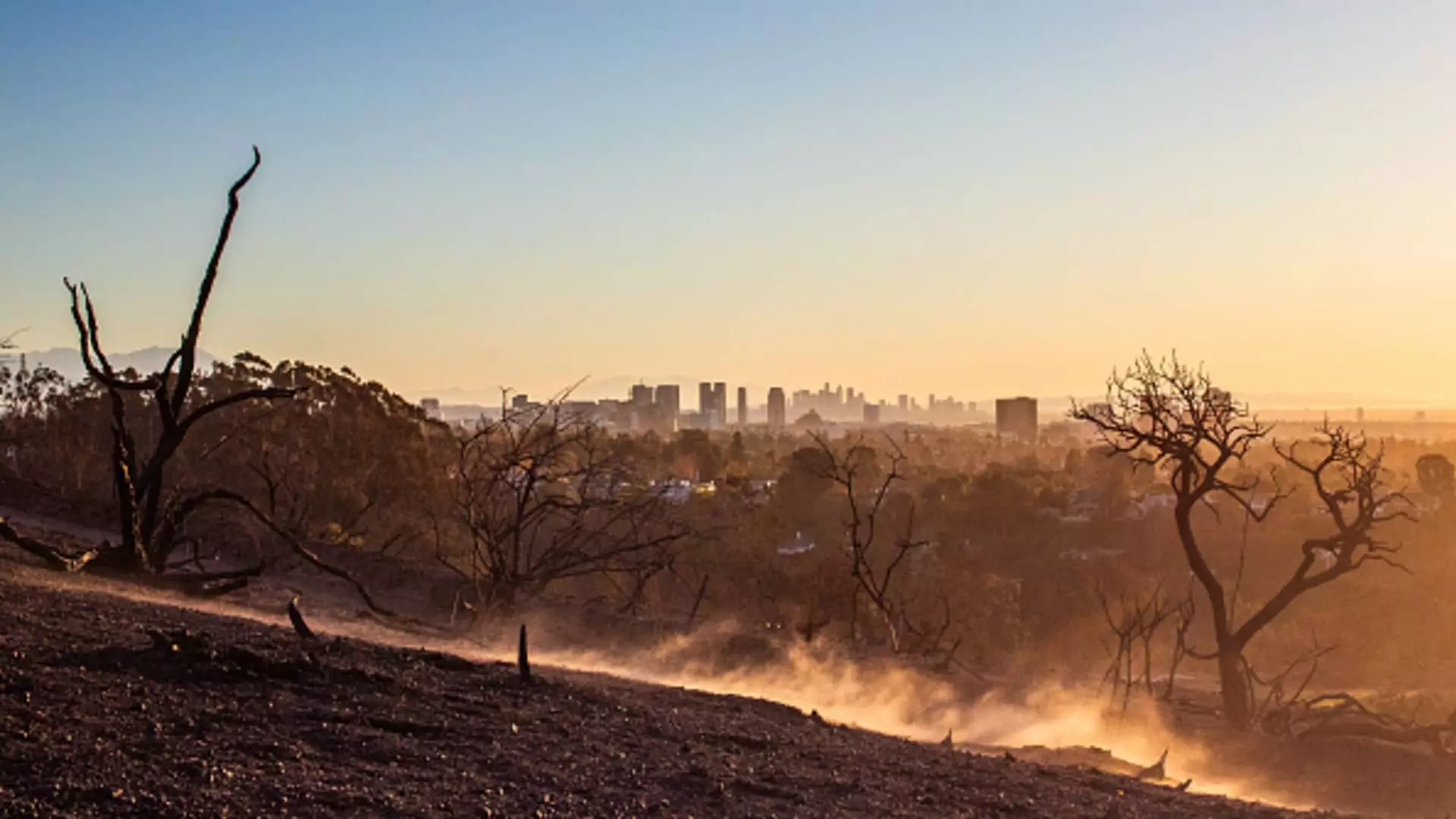The frequently escalating insurance premiums in the United States have reached alarming levels, particularly following recent catastrophic wildfires in Los Angeles. This trend, exacerbated by increasing natural disasters, is likely to change the landscape of homeowners’ insurance in profound ways. Analysts suggest that the costs associated with these wildfires may exceed $20 billion, making them potentially the most expensive disasters in U.S. history. Consequently, insurance consumers and regulators alike must address the growing dilemma posed by climate-related catastrophes and their financial repercussions.
The Financial Burden of Wildfire Damage
As California braces for the economic impact of natural disasters, homeowners face the immediate consequences. The hikes in homeowners’ insurance are a direct response to the rising risks that insurers must account for. As insurers navigate these challenges, Patrick Douville from Morningstar emphasizes the need for risk-based pricing, which suggests a necessary increase in premiums to maintain the viability of insurance providers. With California’s Department of Insurance recently endorsing rate increases linked to enhanced coverage for wildfire-prone areas, some consumers have already seen insurance premiums soar by as much as 34%.
The prevalence of harmful weather patterns further complicates matters. A single fire-related claim could propel premiums upward by an average of 29%. Should homeowners need to file multiple claims, their costs could swell by nearly 60%. This reality underscores not only the economic strain on homeowners but also raises questions about long-term affordability. The potential for property values to decline is a troubling possibility, leaving many California residents in precarious positions.
While California may be at the forefront of this insurance crisis, the implications of increased premiums will ripple across the nation. Many homeowners outside California may wonder about their insurance rates. Janet Ruiz of the Insurance Information Institute assures that insurance premiums in other states are not independently influenced by Californian disasters, as each state regulates its own rates. However, the growing frequency of extreme weather events is raising alarms across the country.
Even in states with looser insurance regulations, like Vermont, homeowners are beginning to ask tough questions about potential insurance hikes. As Michael Barrett of Barrett Insurance Agency points out, natural disasters are affecting the entire country, prompting many to grapple with whether their insurance premiums will reflect their region’s changed climate realities. This situation serves as a critical reminder that weather patterns show no geographic restraint.
In 2023, nearly half of all homes in the United States faced the risk of severe damage from environmental events, signaling a broader trend tied to climate change. Reports from the National Oceanic and Atmospheric Administration highlight the financial toll of climate catastrophes—27 distinct natural disasters resulted in over $1 billion in damages each last year, reflecting a staggering increase. Given this trend, it is evident that home insurance rates have risen by almost 34% in recent years, with a significant leap occurring in 2023 alone.
Experts warn that underinsurance is a pressing issue that homeowners must confront. Many homeowners have been operating on outdated home valuations that do not accurately reflect current rebuilding costs, which have skyrocketed post-pandemic. Some homeowners may have the same coverage they obtained years ago without factoring the rising expenses of construction materials or labor. Lewis from NerdWallet urges homeowners to constantly reassess their policies and ensure that their coverage aligns with current rebuilding costs to prevent potential financial ruin.
For homeowners, it is crucial to regularly engage with insurance agents or local contractors to adequately estimate how much it would cost to rebuild their homes, should a disaster occur. The misalignment between current property values and insurance coverage must be addressed to protect individuals from significant financial setbacks.
Flood insurance represents another area of concern. Homeowners and renters insurance policies often miss covering flooding events, requiring additional policies to protect against this growing risk. Awareness of these variables is essential to ensure comprehensive coverage moving forward.
Overall, the landscape of homeowners’ insurance is becoming increasingly complex as climate change redefines risks and costs. Understanding this dynamic is crucial for homeowners looking to protect their properties while also minimizing financial hardships. As insurers and regulators grapple with the implications of climate-related disasters, homeowners must remain vigilant in assessing their coverage and adapting it to meet rising challenges.

